Last December, when the Michelin Guide announced which California restaurants had been blessed with a coveted star (or stars) for the year—undoubtedly the most prestigious designation in the culinary world—new entrants such as chef Curtis Stone’s Gwen and 715, a spare, omakase sushi joint, garnered heartfelt applause at Michelin’s “Star Revelation” event held at Los Angeles’ Peterson Automotive Museum.
But not everyone was so bowled over by the selections made by the French tire company, which has been issuing its renowned restaurant guide for over a century now. “I think we all had a WTF moment when Hatchet Hall was called on to the stage to be awarded a star,” wrote Max Shapiro in a lengthy Instagram Story that he posted a week after the ceremony. The Story consisted of 15 artfully presented photos of a meal Shapiro had had at Hatchet Hall, a cozy, Southern-inspired eatery with city-famous cornbread.
Each slide diligently deconstructed appetizers, sides, and main courses with precise judgments worthy of a Top Chef episode. The dry-aged kanpachi crudo was deemed to have “a really good level of salt and acid” but condemned for having too much horseradish: “It completely blew out your nostrils and was all you could taste.” As for the grilled Peads & Barnetts pork chop: “It’s kinda hard to fuck up a peads chop, but they managed to screw this up big time.” The offense? The meat was well-done and dry. As for one of the dessert items, a single scoop of chocolate malt ice cream: “Tasted like Nesquik ice cream. The ice cream had a slightly powdery texture to it. Maybe from the malt powders? Not very good, unless you love Nesquik.”
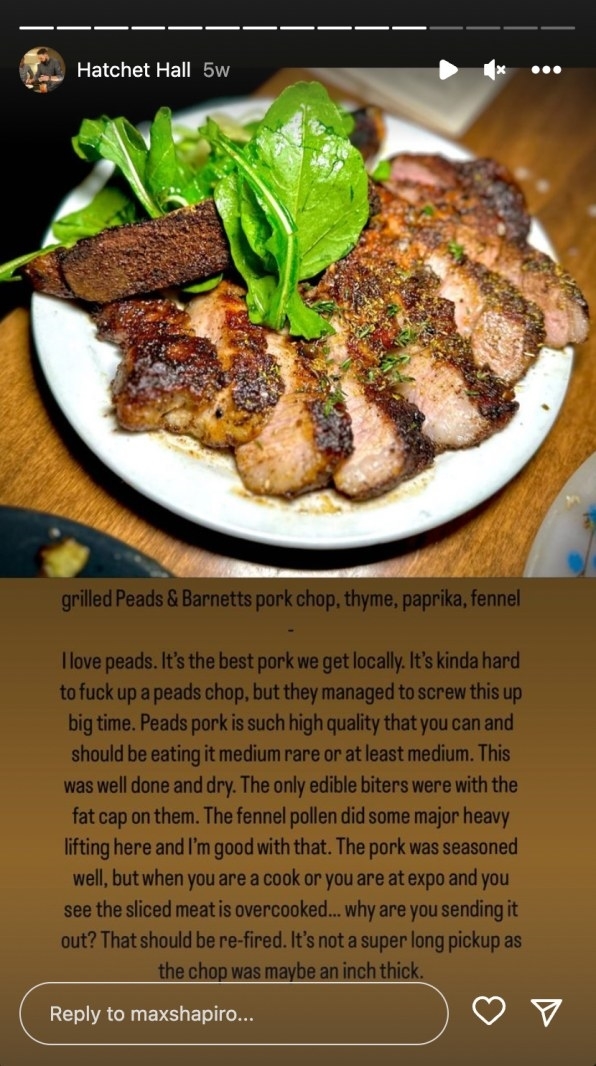
Shapiro, a 39-year-old, 6 foot 2 Angeleno with a groomed hipster vibe, isn’t a credentialed restaurant critic or someone who has spent time as a restaurant sous chef or saucier (he was an unofficial one, he says, when he was 10). His main gig is selling luxury real estate, a career that took off 20 years ago when he was the go-to broker for such stars as Lindsay Lohan and Frankie Muniz. Shapiro is still hawking houses in Beverly Hills and Bel-Air, but his free time is spent on a kind of non-stop fine-dining tour of L.A.—and the world—a pastime he’s been pursuing since he was a kid growing up in L.A. (Family dinners were often at Mr. Chow).

Shapiro’s love of food and the dining experience—combined with his fearlessness, curmudgeonly wit, and understanding of the elements of what makes both a successful dish and an inviting vibe—make his reviews a refreshing antidote to what passes for restaurant criticism these days. The internet—and Instagram in particular—is awash in food influencers who who have helped fuel the FOMO allure of places like The French Laundry and Noma, which announced in early January that it will close next year. (Shapiro is a fan of neither.) Meanwhile, traditional media critics are increasingly endangered (along with the newspapers and local magazines that have traditionally employed them).
Indeed, all of the media hubbub that has turned chefs like Massimo Bottura and Roy Choi into Netflix-starring brands with empires to tend to makes Shapiro highly skeptical of the food that’s being turned out at their actual eating establishments. As he sees it, the situation is made all the worse by fawning vloggers, inexperienced critics (ask him about the Los Angeles Times), and, yes, the Michelin Guide, all of which he believes are operating more in the service of chefs and the politics of the culinary world than consumers who in some cases are shelling out thousands of dollars for a meal.
To help correct this distortion, Shapiro turned to Instagram, where he has been dutifully crying foul on any restaurant he feels is overrated or being otherwise inaccurately portrayed by foodie culture. Although he says that approximately 70% of his reviews are positive, his willingness to display an FU attitude where he feels it’s necessary for his audience of more than 26,000 followers is refreshing. As is how he’ll pepper his critiques with foul language, sometimes sounding more like a locker room bro than someone who says that a meal at Asadore Etxebarri in Northern Spain once made him cry (from happiness). It makes Shapiro stand out in the elite, fine-dining bubble. This approach, served up, as it were, on the foodie-centric platform of Instagram has also made him increasingly relevant. Shapiro’s growing platform also includes a co-hosting gig on the popular foodie podcast Air Jordan, created by Jordan Okun, another fast-talking Angeleno.
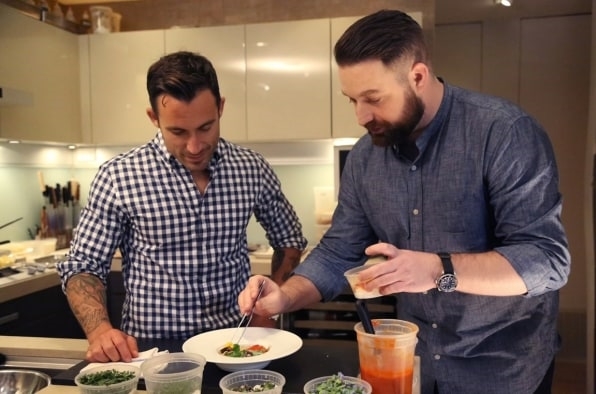
As for his motivation, Shapiro claims he’s simply trying to balance the scales. “The point of me doing these reviews is, we have so many people giving their opinion, or, not even their opinion, but just posting about places that end up sucking,” he says when we chat on a recent rainy morning in L.A.
“And some of these places cost a lot of money,” he says. “Let’s say it’s your anniversary dinner, and you penny pinch and you cook at home and you only go to dinner, like, six times a year. And because you follow certain people on Instagram that post about certain places, you pick this one place to go to for your anniversary. And it ends up being terrible. You wasted all this money on a terrible meal based on liars. So, for me, I want to tell people how it really is. I want to show people, Okay, here’s the good, here’s the bad—you still want to go? Great. If you don’t, you know the reasons why I didn’t like it. Or the reasons I think it’s not worthy of what it’s being said to be.”
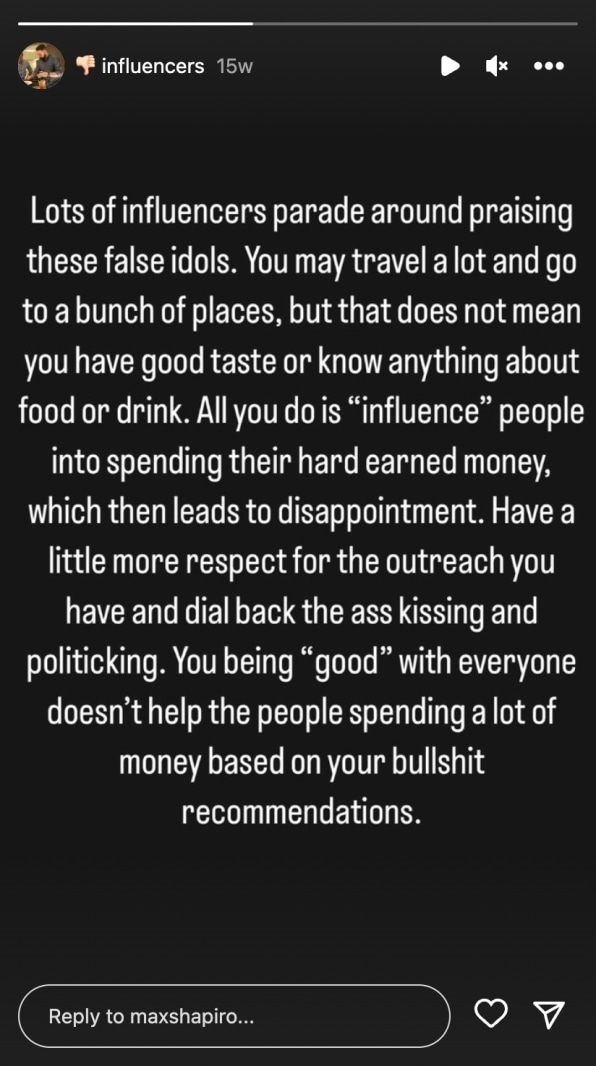
Shapiro’s critics could easily dismiss him as a spoiled Beverly Hills kid. A more accurate take is that he’s consistently taken advantage of his privilege to educate himself and dive deeper into his passion for food. As a kid dining at the top restaurants in the city, where his real estate agent father “knew people”—“I’d just ask a lot of questions,” he says.
“I remember, at Mr. Chow, they had something called ‘Squab and Lettuce Leaf.’ And I was like, ‘What’s a squab?’ Someone said, ‘Well, it’s actually a pigeon, but squab means that it’s farmed and not just a street pigeon.’”
He then was informed that the squab on the menu “was actually chicken, because Beverly Hills clientele didn’t want to eat pigeon.”
A top high school basketball player, Shapiro was recruited by UCLA and UNLV, but a knee injury intervened. He ended up attending Menlo College, where he found himself depressed about both school and basketball; he knew neither was going to be a thing. After his first semester, he wrote his dad an email saying he wanted to drop out, and his father replied that he could come back to L.A., but he needed to find a job within six months. Through a family connection he wound up as Tom Arnold’s assistant, a job that was mostly normal, save for a few eccentric tasks. “Every Tuesday, Tom had AA meetings at his house. He had an Arby’s sponsorship, and so I had to go to Arby’s and get food for 30 people (for the meetings). I ended up having to sell my car because it smelled like Arbys.”
Realizing the $5-an-hour-gig was not going to support him, Shapiro decided to follow in his dad’s footsteps and earn his real estate license. Almost overnight, he was making enough money to buy his own house and became a known entity amongst L.A.’s cool kids. One news outlet minted him the “Millionaire Real Estate Whiz Kid.” His income allowed him to more fully enjoy eating out as well as cooking. In 2011, he started a pop-up, high-end restaurant in his home, where diners were taken off a wait list and intimately served a 16-course meal for $180 a head. It was the early days of social media and the concept took off. His underground fine-dining restaurant grew to have waitlist of 11,000, and the experience was also Shapiro’s first foray into artfully iPhoned photos of mouth-watering food designed to drum up interest.
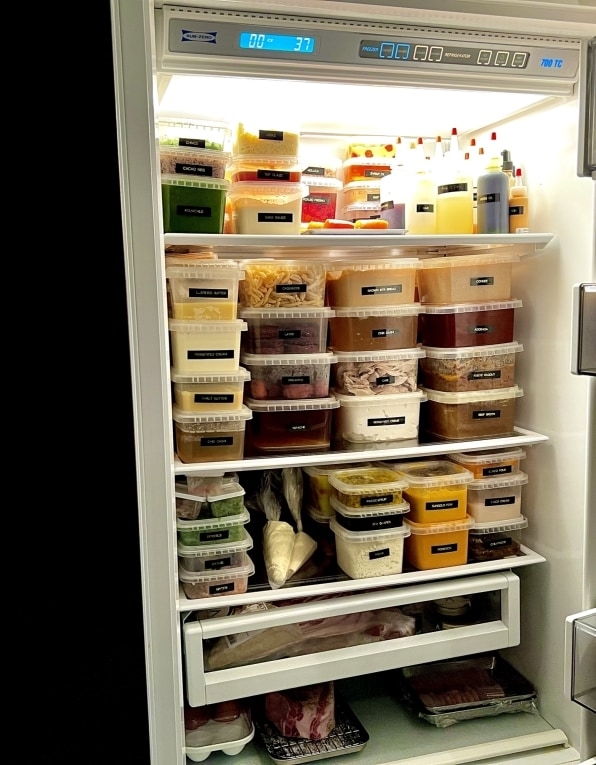
Shapiro pegs his moment of great disillusionment with the dining establishment to a meal he had in 2019 at Osteria Francescana, a three-star Michelin restaurant in Modena, Italy that at the time was the top-ranked restaurant in the world.
“That’s what pissed me off enough to start reviewing restaurants,” he says. “Pound for pound, it was probably the worst meal I’ve had in my life. Obviously, I’ve had worse food. But when you factor in the travel, the hype, the price—everything. That pissed me off, because so many people on social media were kissing (chef) Massimo’s ass. You would think based on his personality and the way he presents himself (Bottura was the first episode of the first season of Netflix’s Chef’s Table) that inside that restaurant it would be fun. It was excruciating.
“No one was smiling. Service was weak. It was boiling hot. There were lights above our heads, in our eyes, that were at, like, 100% full blast. And the food sucked.”
On podcasts and Instagram, Shapiro’s barbs are (a bit) more nuanced, but in conversation he resorts to scorched-Earth declarations. Disfrutar, a two-Michelin star restaurant in Barcelona, “sucked.” At Pasta Bar, another newly-minted Michelin restaurant in L.A., “You could smell sewage inside the dining room.” The French Laundry? “Terrible.” Noma? “A letdown . . . René Redzepi has done more for food than most chefs of all time. But I think that it’s best if you don’t eat his food.”

Shapiro says he’s never gotten feedback from restaurants or chefs after lambasting them, nor has he ever been banned from establishments. But in a sign that his voice is being heard, after posting a constructively critical review of Pasta Bar, he said that a friend visited the restaurant a few weeks later and reported back that all of the issues that Shapiro had brought up had been corrected.
“I’m basically a restaurant consultant that doesn’t get paid, but instead pays to consult,” he jokes.
The Michelin crowning of Hatchet Hall, along with other restaurants that Shapiro strongly feels should not have been included on Michelin’s latest California list, have fueled his latest digital project: a re-review of the restaurants in the state that were granted stars. Others he’s reassessed so far include Sushi Bar in Montecito, which he admits is “relatively fun and cool” but does not think should have been starred.
Let it be known that Shapiro is a fan of, even loves, certain chefs and restaurants, including Gjelina, near Venice Beach, and Addison, outside of San Diego, which just earned three Michelin stars. Indeed, part of his beef with Hatchet Hall is that it got a star before Gjelina, which has a similar farm-to-table DNA.
“Hatchet Hall’s menu reads very Gjelina; it lists every farm the vegetables are from. But it’s too much. It’s, like, 55 menu items. Gjelina can execute it, but Hatchet Hall cannot.”
So, will he ever give up his day job to become a full-time food critic? “No way!,” Shapiro is quick to retort. “It’s the only form of income that I have.”
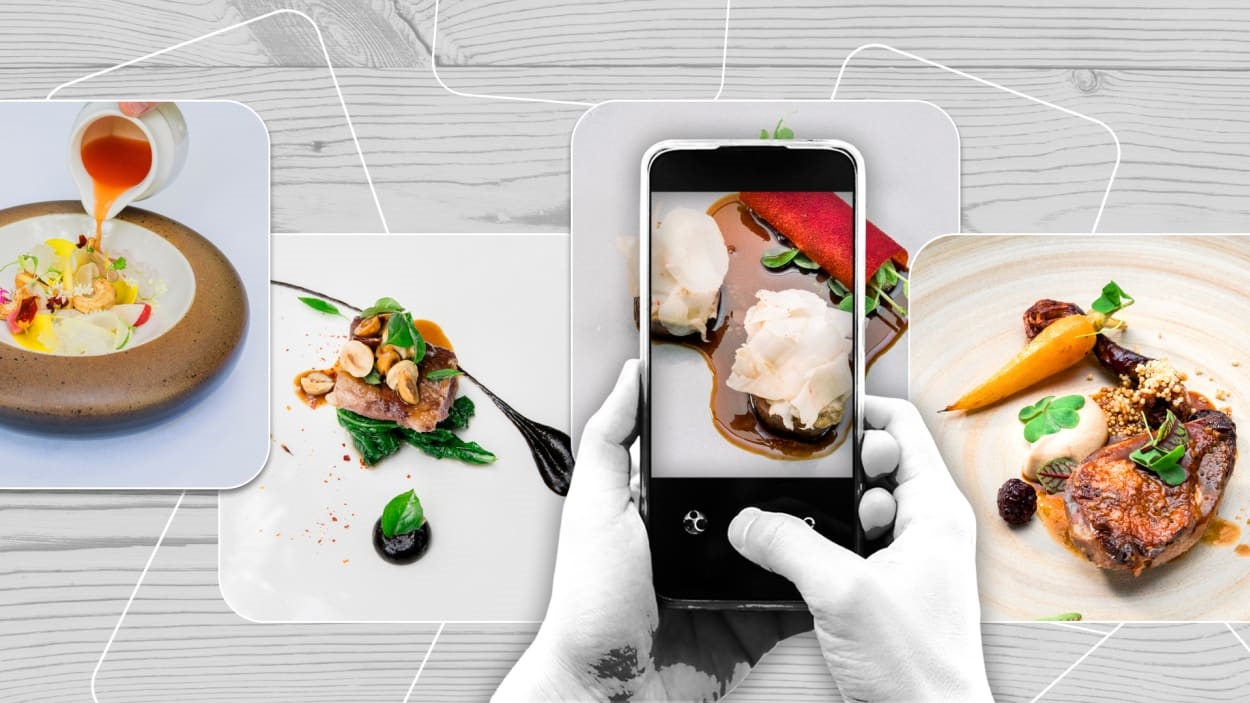
As for the Michelin re-reviewing project, “I have a list of things I need to go to. But I’m in no rush to get this done. I still need to enjoy my life, and I don’t love giving bad reviews. And I don’t love spending a ton of money on shitty food. I try to limit that.”
(11)
Report Post





